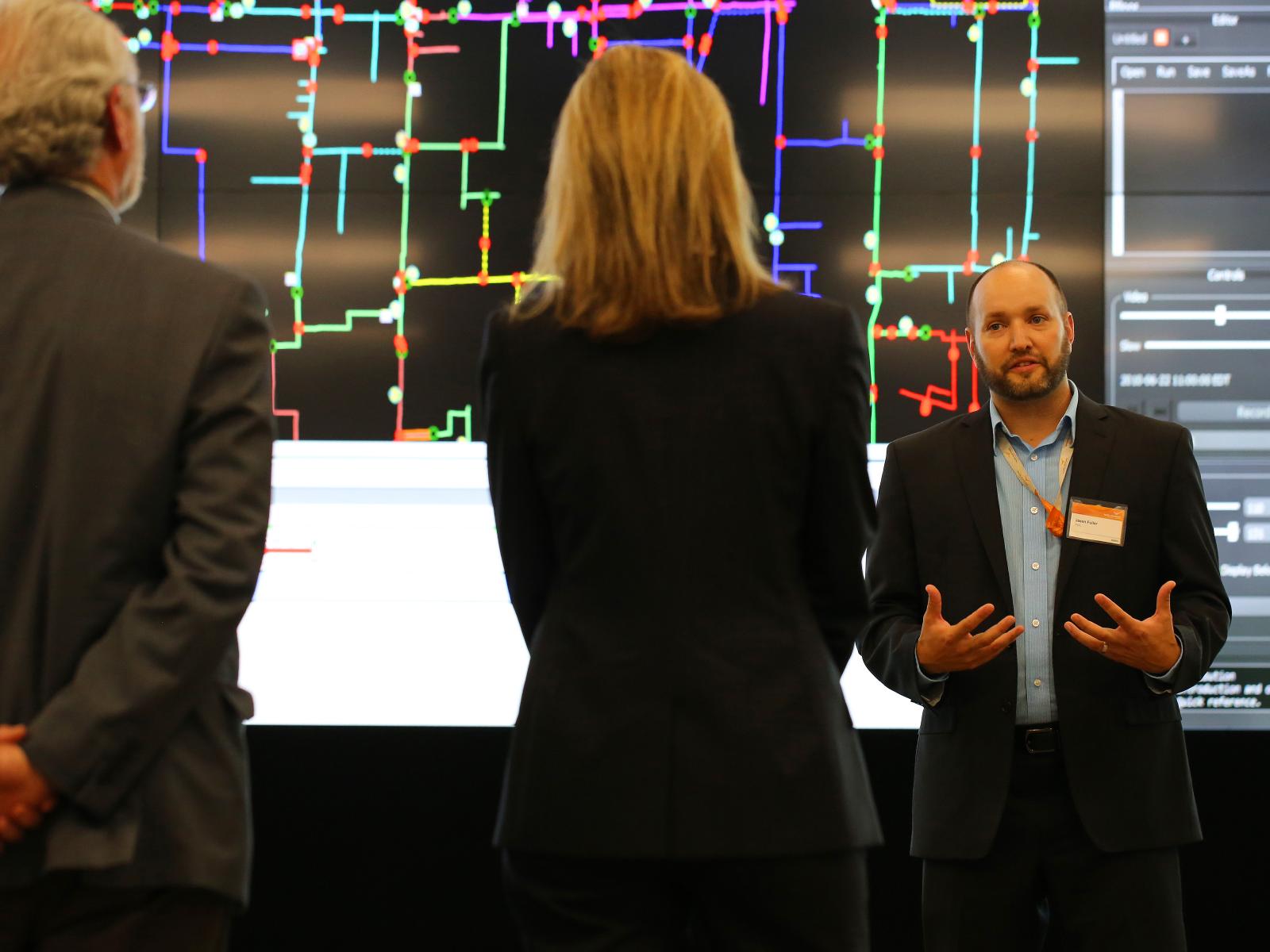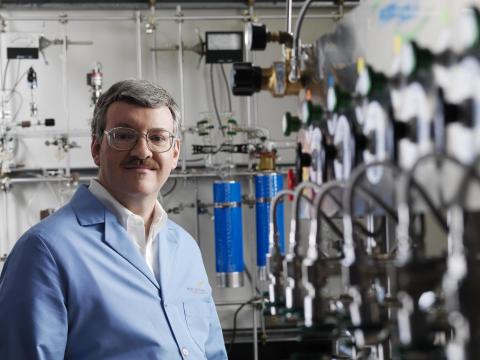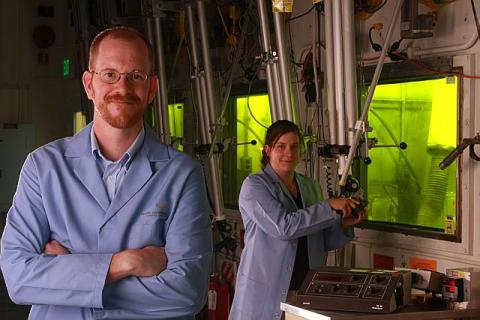Pacific Northwest National Laboratory: Discovery in Action

Rep. Dan Newhouse, left, and Deputy Energy Secretary Elizabeth Sherwood-Randall, right, learned about PNNL power grid research from PNNL's Jason Fuller while touring the new Systems Engineering Building last summer. In cooperation with the Department of Energy's Pacific Northwest Site Office, plans for a modern campus include the addition of new laboratories and office space—with new facilities planned at the rate of about one a year for the next decade.
(Courtesy of Pacific Northwest National Laboratory)
Discovery in action. These words describe what we do at the Department of Energy's Pacific Northwest National Laboratory. For more than 50 years, we have advanced the frontiers of science and engineering in the service of our nation and the world. We make fundamental scientific discoveries that illuminate the mysteries of our planet and the universe. We apply our scientific expertise to tackle some of the most challenging problems in energy, the environment and national security.
As one of the nation's premier chemistry, environmental science and data analytics research laboratories, we have been leaders in inventing the future power grid, understanding climate science, preventing nuclear proliferation and speeding environmental remediation.
As rich as our history is, our future is even brighter. We are focused on four research objectives that build on our proud accomplishments and represent new opportunities to provide distinguished leadership. Specifically, we will conduct research in chemical conversions for sustainable energy, explore the complexities of coastal and riverine ecosystems, delve into the dynamics of irradiated materials and enable the design and control of a robust power grid.
In the area of chemical conversions, we are building on our chemistry expertise to pursue breakthrough catalysts that mimic nature to more efficiently and rapidly produce and store energy. In particular, we seek to develop synthetic enzymes that function at lower temperatures than today's best catalysts. Success here would greatly reduce costs in several energy-related applications, including the production of biofuels and other carbon-neutral fuels.

Our second objective examines the interactions that take place at the interface between land and water, for example, coastal areas and riverways. We will advance our understanding of these important ecosystems with respect to climate change and energy production. We will study global carbon and water cycles as well as the underlying fundamental biological, geological and chemical processes. This will allow us to better harness the potential of these ecosystems for human benefit while protecting them for posterity.
Our capabilities in nuclear science and engineering are key to our third objective, which will drive discoveries about the dynamics of irradiated materials during chemical processing and long-term storage. These insights will enable us to mitigate or tailor the effects of ionizing radiation. For example, we will expand our knowledge of the fundamental chemistry of tank waste for environmental cleanup. This research also will improve our ability to detect nuclear weapons production activities in support of international nuclear nonproliferation efforts.

Last, we will provide leadership in realizing a more secure and reliable power grid. We will help architect the future grid and develop new control systems that enable it to operate more efficiently—while also empowering consumers with greater control over their electricity consumption. Our distinctive capabilities in power systems and high-performance computing will be embodied in tools that will enhance the flexibility and resilience of the grid. And we will apply our considerable cyber expertise to ensure that this smart grid of the future is as secure as it is reliable.
This is an ambitious research agenda to be sure. Fortunately, we have 4,400 creative and dedicated employees who have repeatedly demonstrated their ability to do truly amazing things. We can count on them to rise to this challenge and to exceed all expectations.
We will, of course, seek and welcome the help of others. We will partner with other labs, major research universities and industry to deliver on our vision. We will expand our longstanding and highly productive partnerships with Washington State University and the University of Washington—and we will reach out to new partners who share our passion.
We also will need the continued support of the Tri-Cities. Throughout our 50-year history, we have enjoyed the strong support of the community, our congressional delegation and the Department of Energy. Together, we have made the laboratory a point of local pride and national envy. We look forward to another half-century of advancing human knowledge and improving the human condition.
Steven Ashby, director of Pacific Northwest National Laboratory, writes this column monthly. To read previous Director's Columns, visit pnnl.gov/news and filter by Director's Columns in our Latest Stories.
Published: March 22, 2016